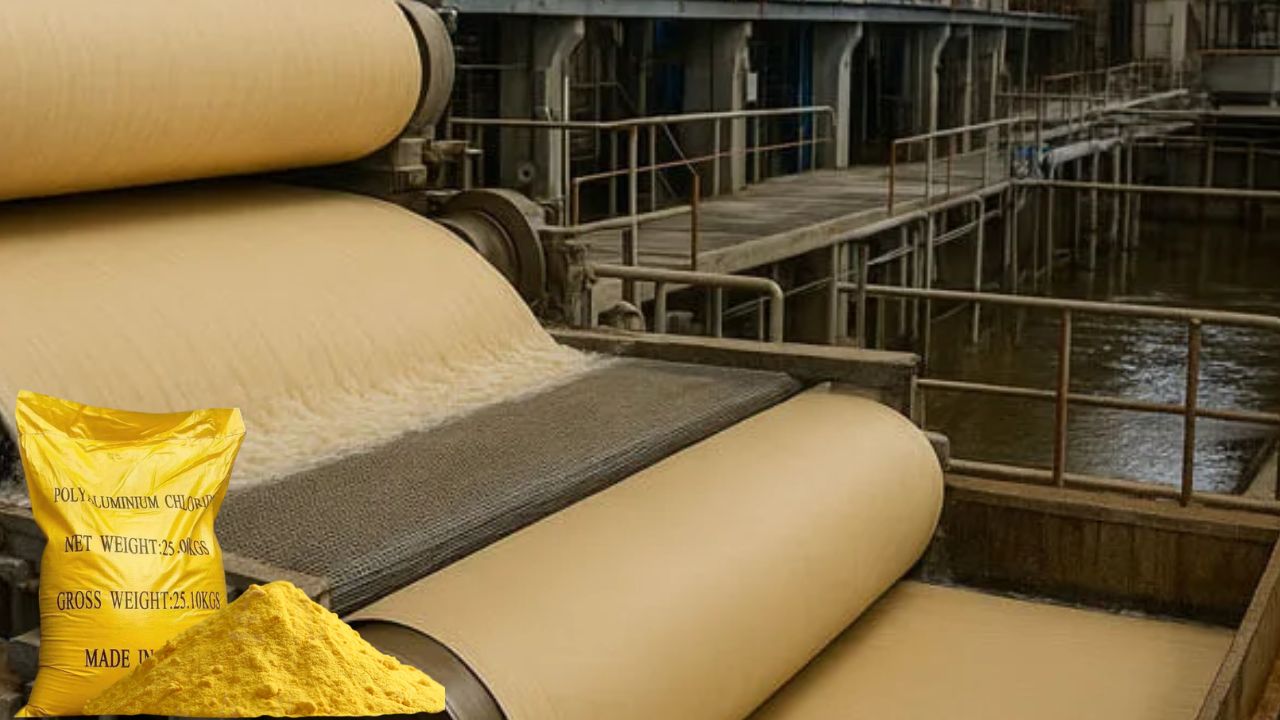Poly Aluminium Chloride (PAC) is not new to the market– It's an age-old product. As a powerful flocculant, it has been used for water treatment for ages. But now, with technological advancement in its production techniques and formulation, new trends shape the industry. Now, they are being efficiently used and demanded in the paper industry. It is because it improves the paper quality. PAC mainly functions in the wet paper-making process, in rosin neutral sizing precipitants, and acts as an anionic impurity capture agent.
So, in this article, we will discuss the key trend shaping the use of poly aluminium chloride in paper industry worldwide. Let’s dive in and get into its details.
What Is Poly Aluminium Chloride?
PAC is a water-soluble chemical employed as a coagulant and a sizing agent. Its two primary uses in the paper industry are as a treatment of process water and to improve the properties of the paper itself. PAC also makes fibers bind together, which enhances the strength of the paper and water resistance. It also assists in getting rid of impurities and suspended particles in the water used in the production of paper.
Why Is PAC Important in Paper Manufacturing?
The manufacturing of paper needs lots of water. Ensuring this water is clean is essential in the production of quality paper. PAC has a vital role in the treatment of this water as it coagulates the impurities and makes them easily removable. Besides, PAC functions as a sizing agent, and it makes paper resistant to water and oil, which increases durability and usability.
Increasing Demand for PAC in the Paper Industry
The international paper sector has experienced high demand growth of PAC over the past years. One of them is the necessity of more effective and eco-friendly approaches to the production of paper. A lot of paper mills are moving on to PAC instead of traditional chemicals such as alum because it is more efficient and has fewer environmental disadvantages. In addition, the strict environmental regulations across the globe stimulate the use of environmentally friendly chemicals. PAC generates less sludge and less waste disposal requirements, thus appealing to mills interested in a small ecological footprint.
Regional Dynamics in PAC Usage
- Asia-Pacific: Asia-Pacific is the fastest-growing region in terms of the application of PAC. The paper industries of China, India, and Southeast Asia are growing rapidly. The drive towards quality paper and environmentally friendly manufacturing is increasing, which stimulates the consumption of PAC.
- North America and Europe: These are developed markets, and the focus here is on modernising existing mills and adherence to more stringent environmental regulatory requirements. PAC helps the mills to improve the efficiency of the water treatment and paper quality, and comply with stringent laws.
- Latin America: New paper mills are being developed in emerging markets here, which are using more PAC.
- Middle East and Africa: These regions are also catching up with PAC in order to enhance the production of papers and the treatment of water.
Advantages of Using PAC in the Paper Industry
- Improved Paper Strength: PAC enhances fiber bonding to make the paper products stronger and more durable.
- Enhanced Sizing: It increases the water and oil resistance of paper and prolongs the life and utility of the paper.
- PAC as Water Treatment: PAC can remove suspended solids and other contaminants in process water, and thus it can be recycled to reduce fresh water intake.
- Cost: PAC reduces the amount of chemicals required and can save sludge disposal costs when compared to the traditional coagulants.
- Environmental Benefits: PAC generates fewer wastes, reducing the impact on the environment of paper mills.
Innovations and Developments
The progress of PAC formulations has witnessed improvement in recent years, which are specifically targeted at the paper industry. Higher grades provide greater purity and dispersion in water. This leads to accelerated coagulation and even paper quality. Manufacturers are also coming up with spray-dried PAC powders that are easier to transport and store, further increasing efficiencies in the operation.
Challenges in the Use of PAC
Although PAC is beneficial, care needs to be taken during its administration and dosing. Poor coagulation or clogging in water treatment equipment may be caused by incorrect application. Paper mills should have trained personnel and a backup of the supplier so that they can get the maximum out of PAC. The other challenges are supply chain logistics management and product quality.
Conclusion
Poly Aluminium Chloride is an important chemical that defines the future of the world paper industry. Its ability to serve in both water treatment and paper enhancement gives mills an opportunity to use it to enhance product quality as well as meet environmental targets. With increasing regulations and the growing importance of sustainability, PAC use will probably increase exponentially and will be supported by further innovations.


